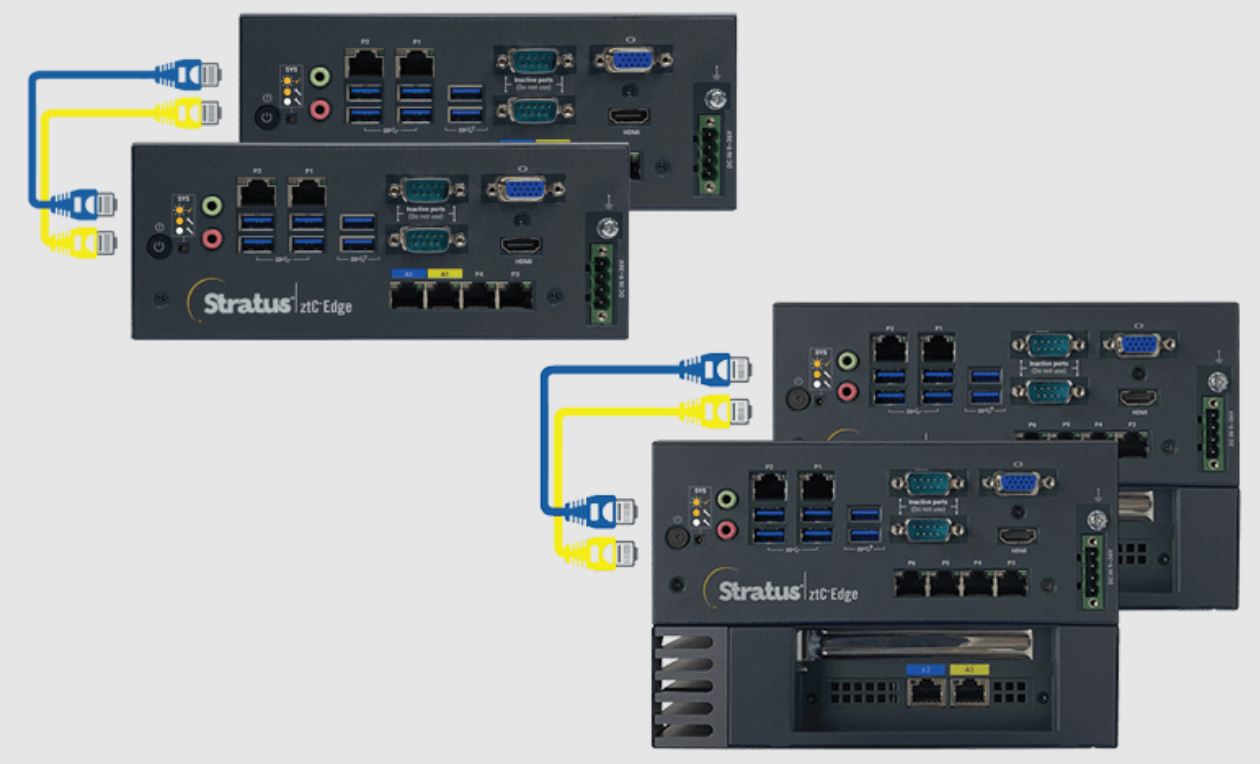EDGE APPLICATIONS
Introducing the unbeatable
Stratus zTC Edge
Across industries, business, operations, and IT leaders want to harness Industry 4.0 opportunities to gain new insight, achieve operational excellence, and operate more efficiently and safely. Edge Computing solves the inherent challenges of bandwidth, latency, and security at edge locations to enable IIoT devices and data acquisition.
ztC Edge provides teams with a zero-touch, secure, and highly-automated Edge Computing platform, purpose-built for edge environments. Its self-protecting and self-monitoring feature drastically reduce unplanned downtime and ensure continuous availability of business-critical applications.

01. Simple
Easy to install, deploy and manage across applications and existing infrastructure as well as scale to new areas of operation.
02. Protected
Mitigates operational, financial and reputational risk by ensuring “always on” availability and securing data from cyber threats or data loss.
03. Autonomous
Reliable, rugged, proven zero-touch technology to run in any environment without human monitoring, maintenance, repairs, or support.
Stratus ztC Edge Key Features
These key features help companies increase productivity and operator efficiency, reduce technical staff dependence, and minimize risk of downtime.
Built-in Virtualization
Stratus ztC Edge ships with its own operating environment called Stratus Redundant Linux. It contains a virtualization host that supports both Windows and Linux guest operating systems, and OVF files and OVA images, including third-party templates.
An intuitive management console makes it easy for local and remote staff to set up, configure, import, and manage their virtual machines.
OT and IT Manageability
Stratus ztC Edge ships with its own console management tool that simplifies system and software management. With it, administrators can remotely access their systems, set thresholds and alerts, check for updates, backup and restore system settings and preferences, and easily manage their VMs.
In addition, administrators can leverage Stratus ztC Edge’s RESTful API calls to enable interoperability with third-party systems management tools, allowing local or remote monitoring and management on a single pane of glass.
Automated Protection
When deployed as a redundant pair (dual deployment), Stratus ztC Edge provides instant protection for your workloads. Data is automatically replicated across platforms. VMs running on one platform will automatically restart (in High Availability mode) or resume (in Fault Tolerant mode) on the other machine in the event of a failure.
If Stratus ztC Edge detects a networking or disk failure on one computer, it automatically re-routes traffic or uses data on the other computer, with no operator intervention. Platforms can even be deployed across physical distances for automated local site recovery.
Simplified Security
Stratus ztC Edge is designed to help OT or IT more easily secure their Edge Computing environment. A host-based firewall, restricted USB ports, role-based access controls with Active Directory integration, secure communications protocols, and secure and trusted boot all work together to minimize your security exposure.
Rugged Redundant Nodes
Stratus ztC Edge is designed to help OT or IT more easily secure their Edge Computing environment. A host-based firewall, restricted USB ports, role-based access controls with Active Directory integration, secure communications protocols, and secure and trusted boot all work together to minimize your security exposure.
Industrial Interoperability
Stratus ztC Edge supports common OT and IT protocols, making integration into existing industrial automation environments easier. SNMP requests and traps can be used to configure notifications and alarms.
Customers can use OPC UA attributes, or a RESTful API, to present relevant system data within most third-party systems management tools and dashboards.
Field Serviceability
Stratus ztC Edge platforms are hot-swappable and auto-synchronizing when deployed as a redundant pair, making field repairs quick and easy.
Maintenance or repairs to individual computers can be completed while the node is running and without a system reboot, ensuring service continuity. This allows OT or IT staff to plan and complete a system repair when it is convenient.

